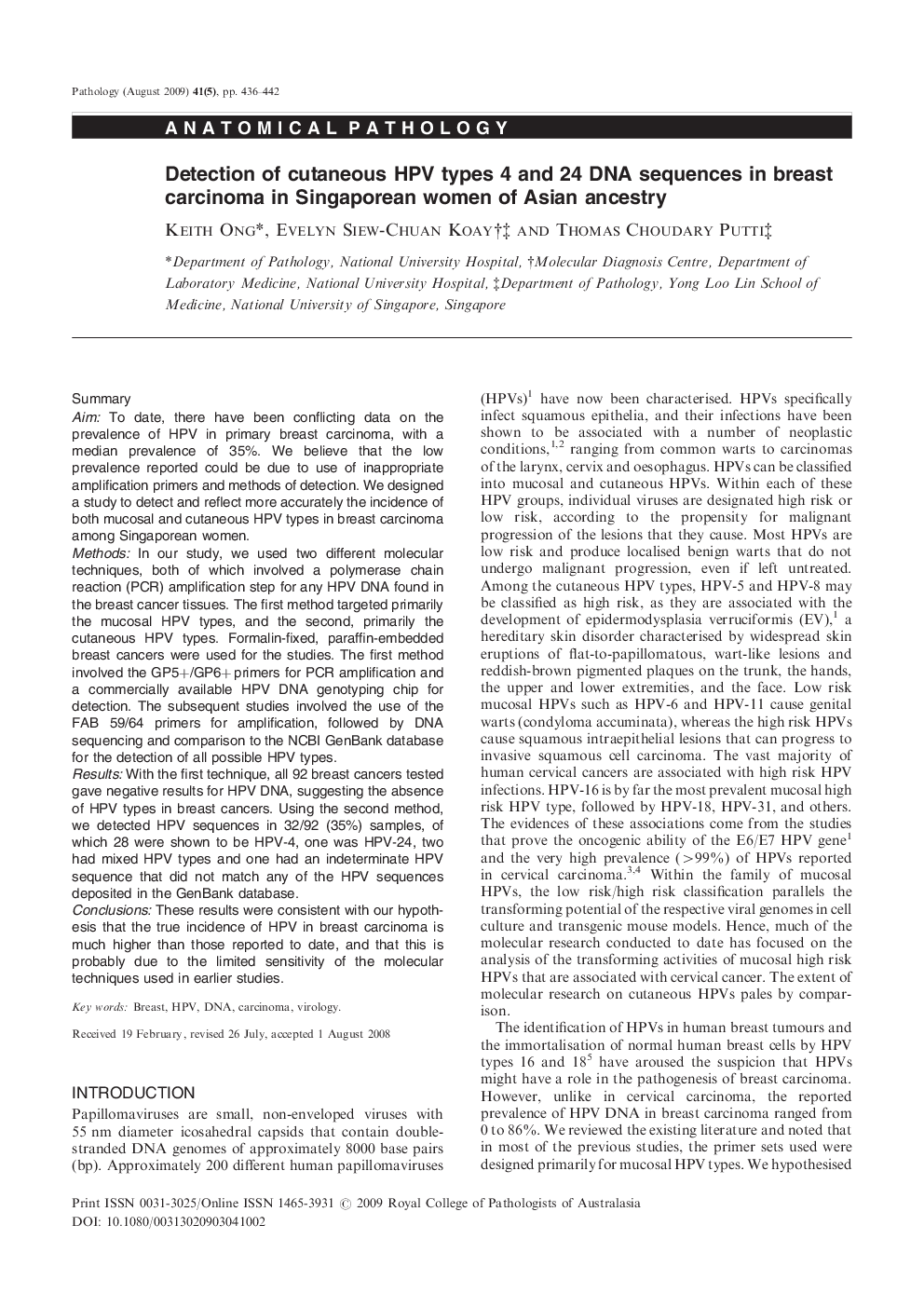| Article ID | Journal | Published Year | Pages | File Type |
|---|---|---|---|---|
| 105767 | Pathology | 2009 | 7 Pages |
SummaryAimsTo date, there have been conflicting data on the prevalence of HPV in primary breast carcinoma, with a median prevalence of 35%. We believe that the low prevalence reported could be due to use of inappropriate amplification primers and methods of detection. We designed a study to detect and reflect more accurately the incidence of both mucosal and cutaneous HPV types in breast carcinoma among Singaporean women.MethodsIn our study, we used two different molecular techniques, both of which involved a polymerase chain reaction (PCR) amplification step for any HPV DNA found in the breast cancer tissues. The first method targeted primarily the mucosal HPV types, and the second, primarily the cutaneous HPV types. Formalin-fixed, paraffin-embedded breast cancers were used for the studies. The first method involved the GP5+/GP6+ primers for PCR amplification and a commercially available HPV DNA genotyping chip for detection. The subsequent studies involved the use of the FAB 59/64 primers for amplification, followed by DNA sequencing and comparison to the NCBI GenBank database for the detection of all possible HPV types.ResultsWith the first technique, all 92 breast cancers tested gave negative results for HPV DNA, suggesting the absence of HPV types in breast cancers. Using the second method, we detected HPV sequences in 32/92 (35%) samples, of which 28 were shown to be HPV-4, one was HPV-24, two had mixed HPV types and one had an indeterminate HPV sequence that did not match any of the HPV sequences deposited in the GenBank database.ConclusionsThese results were consistent with our hypothesis that the true incidence of HPV in breast carcinoma is much higher than those reported to date, and that this is probably due to the limited sensitivity of the molecular techniques used in earlier studies.
